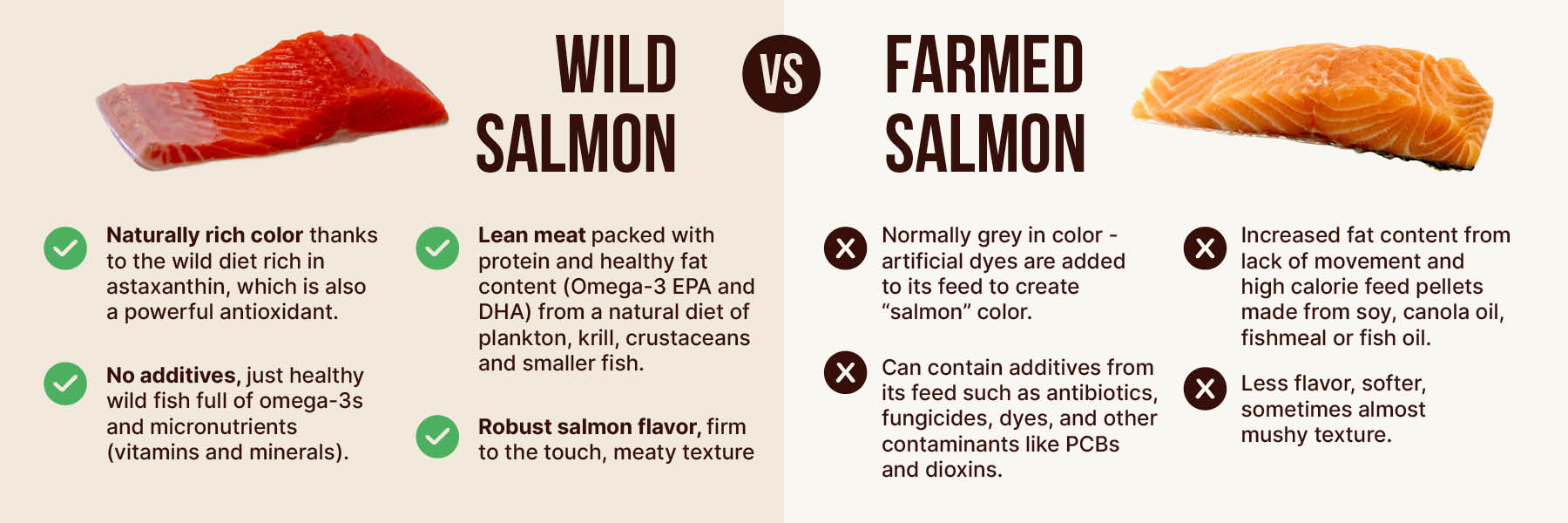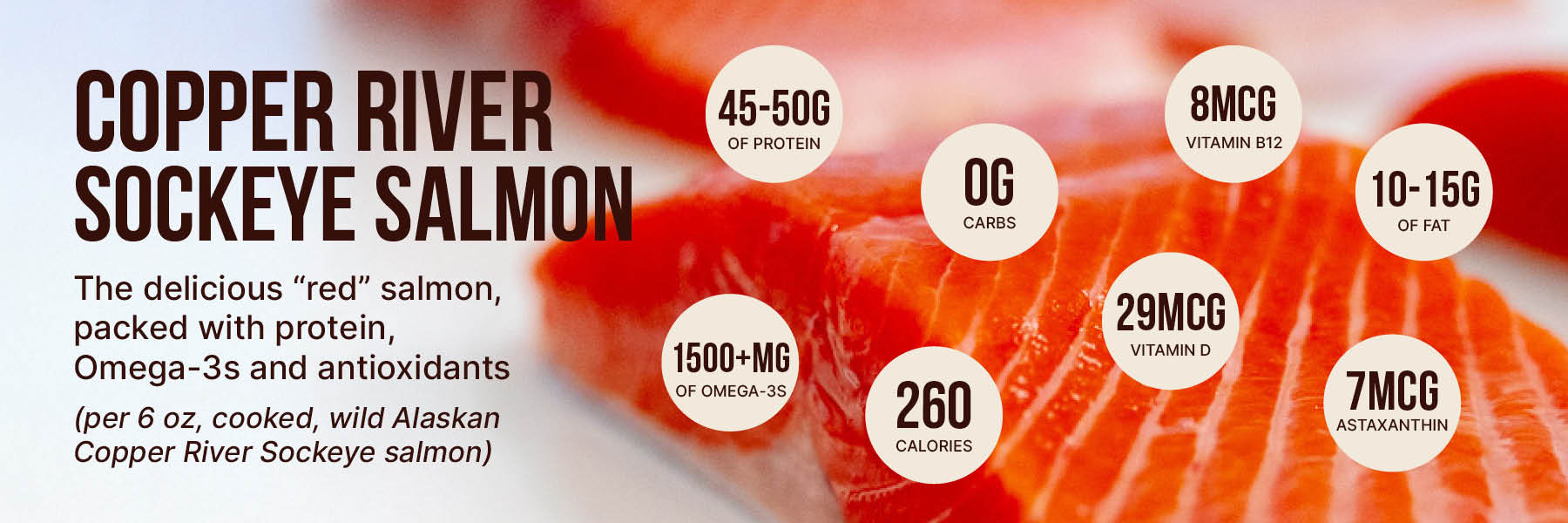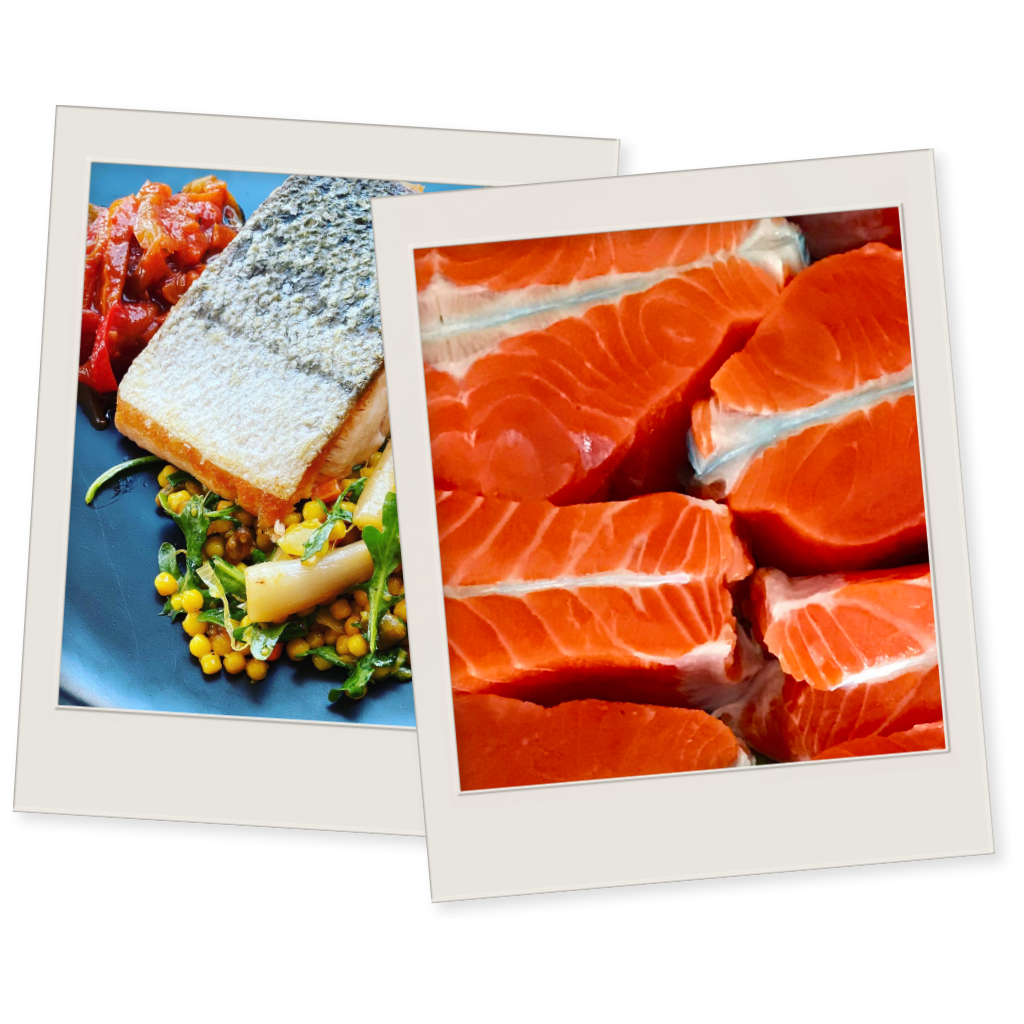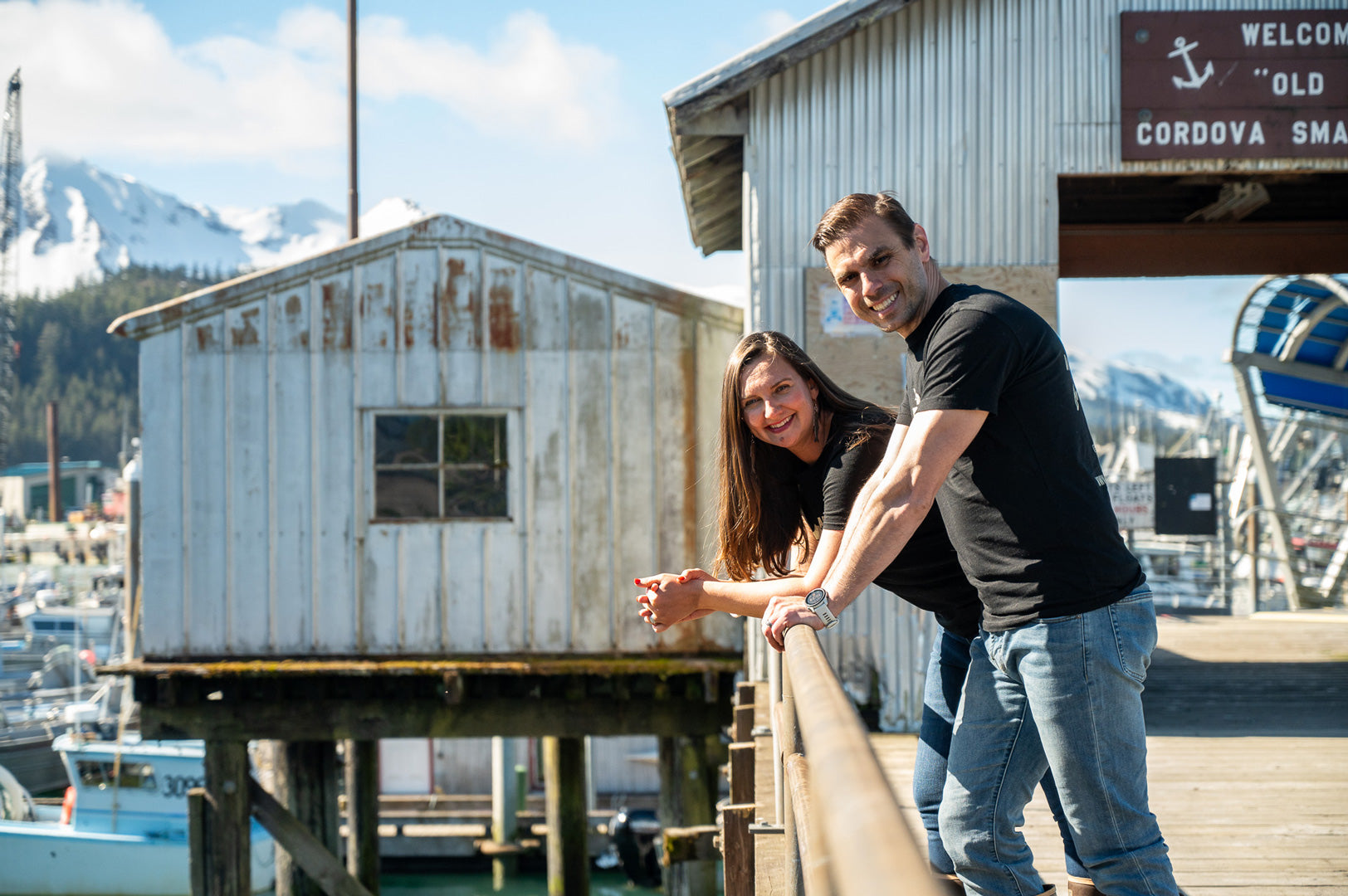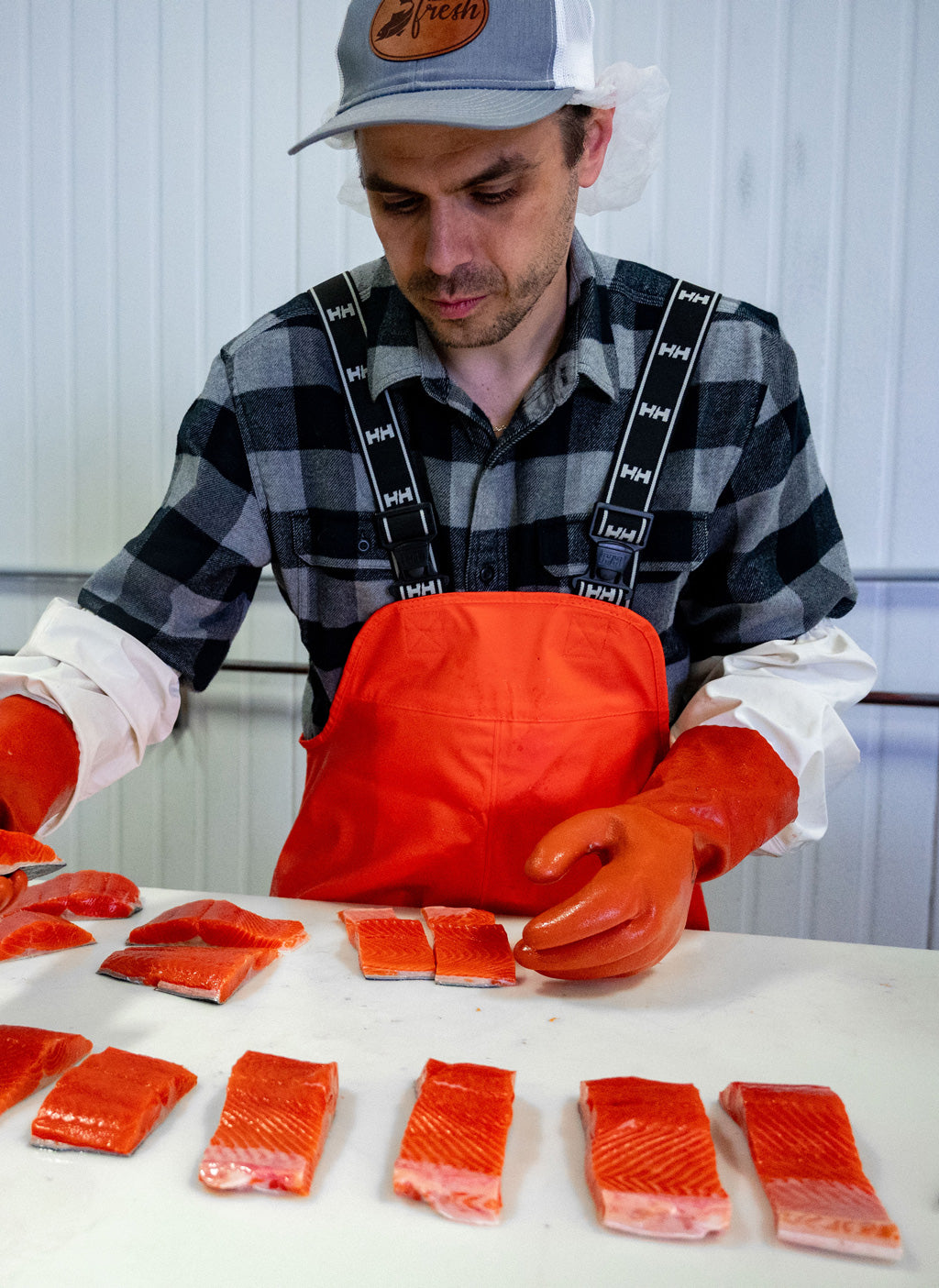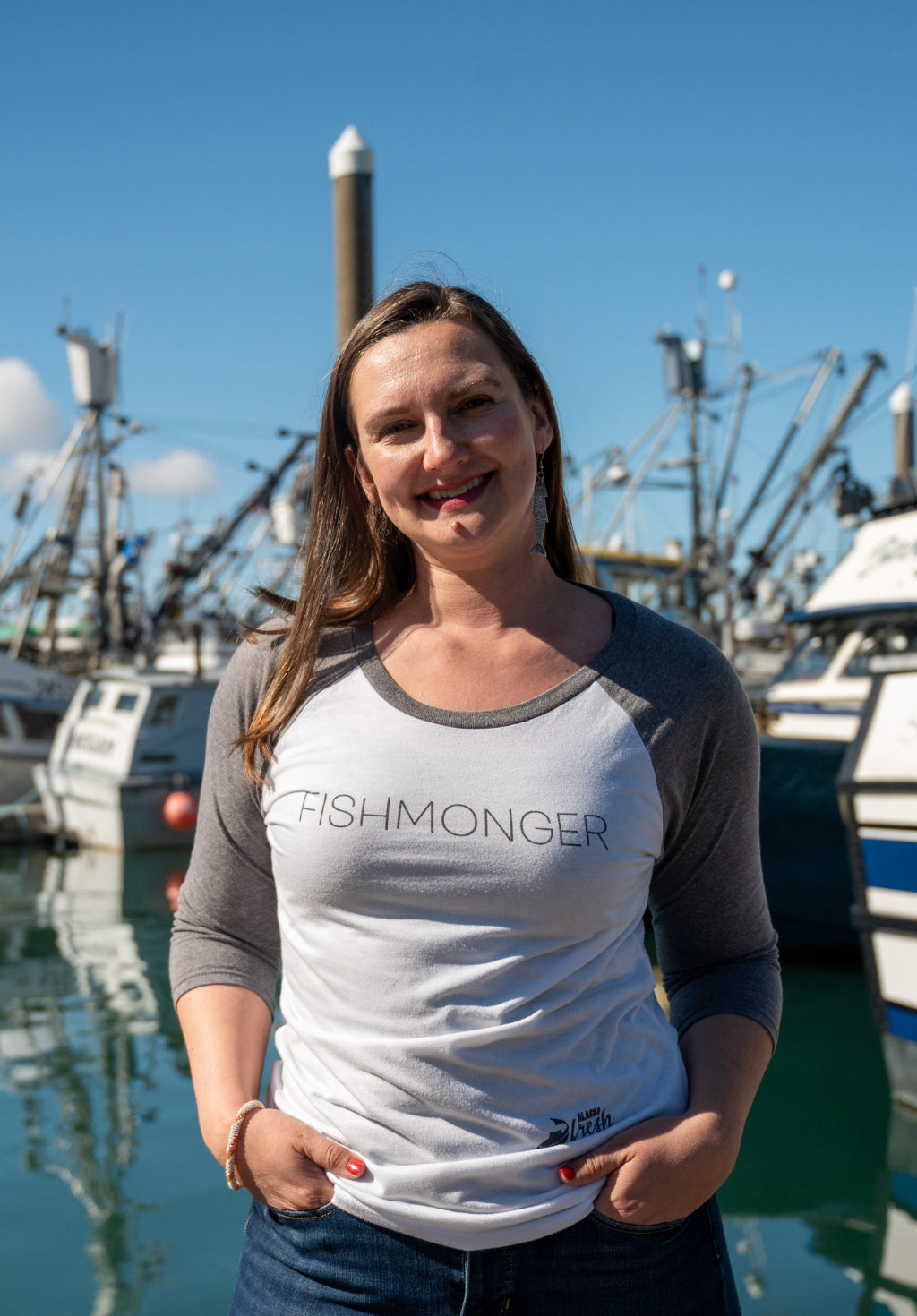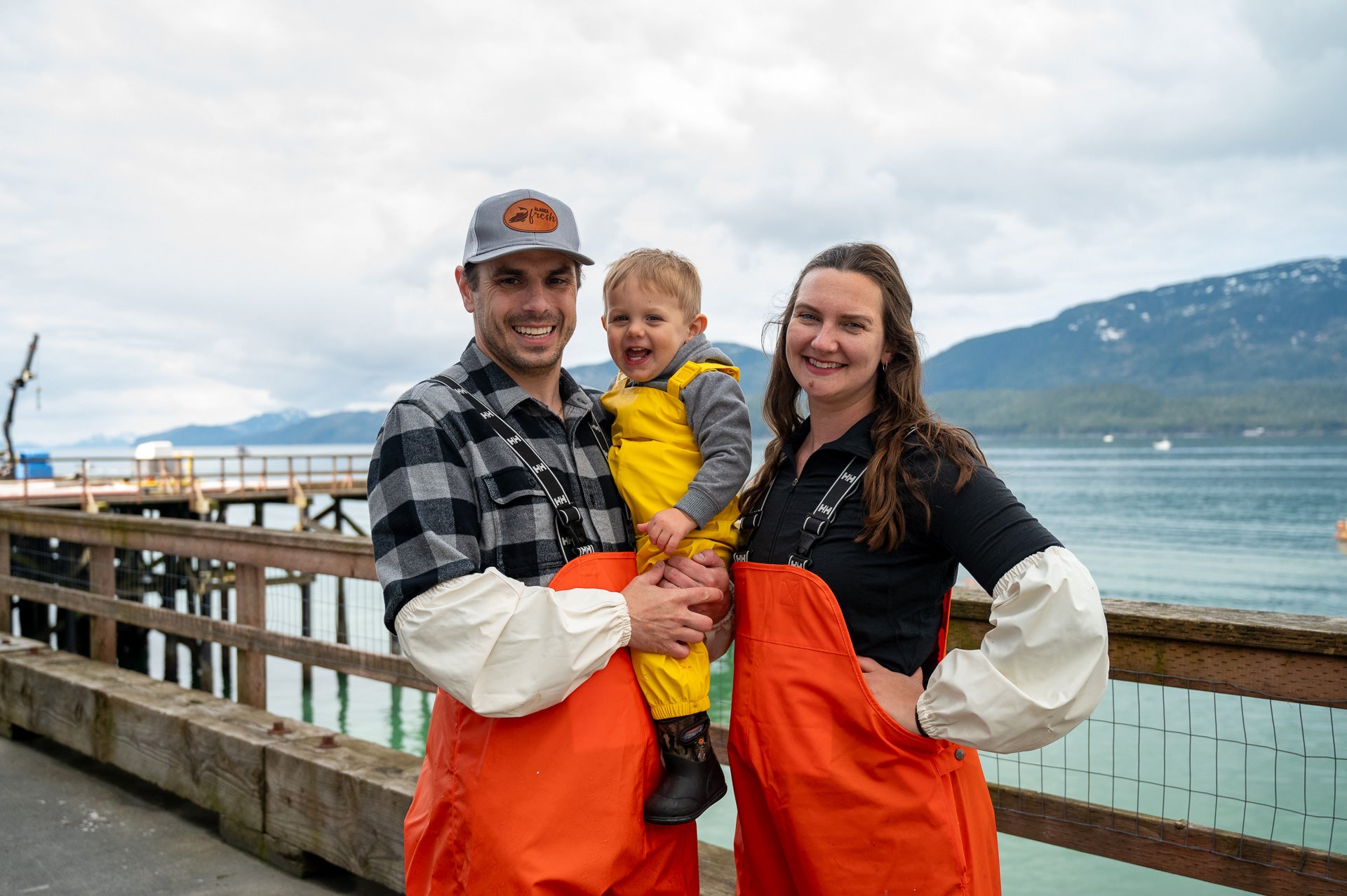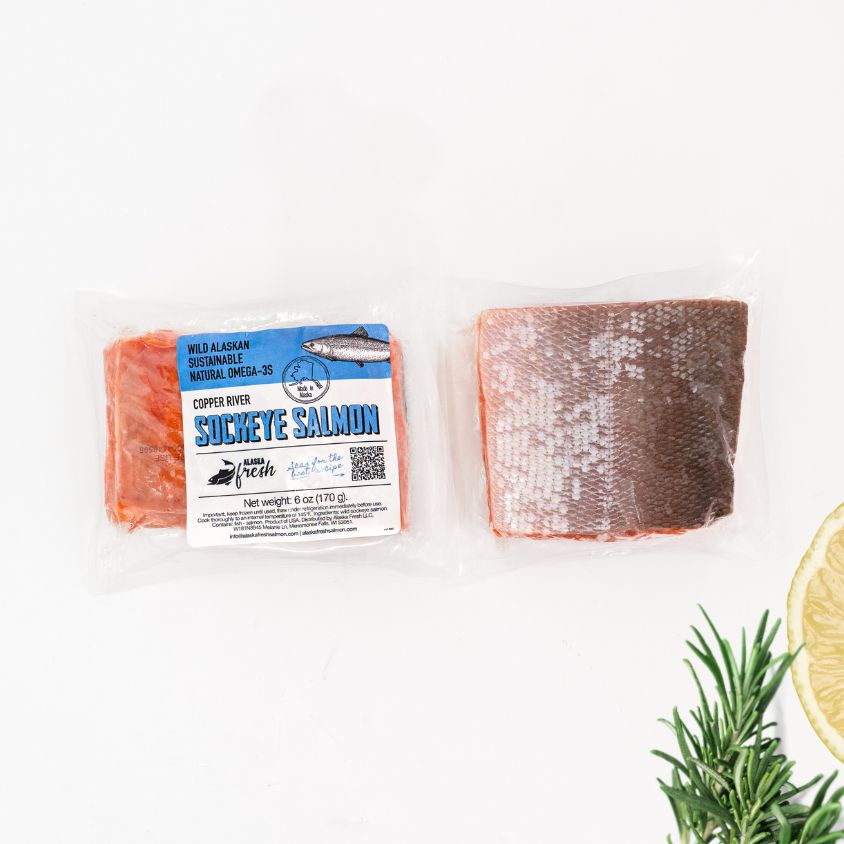
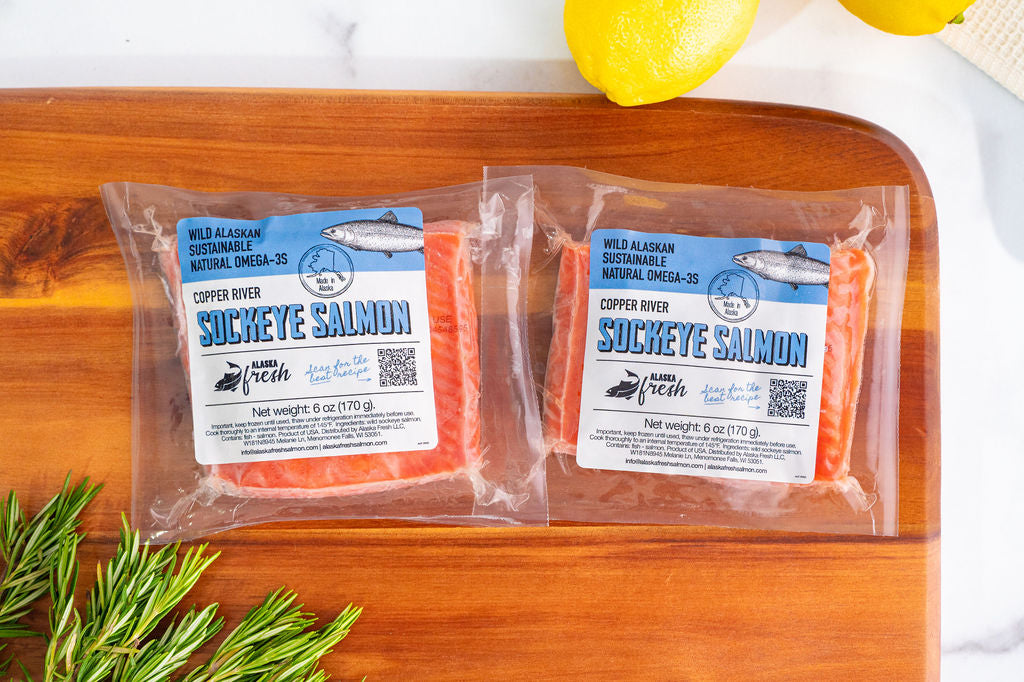
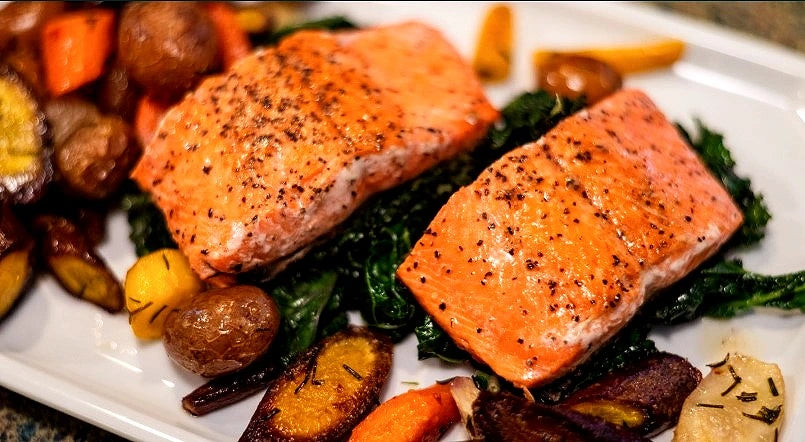
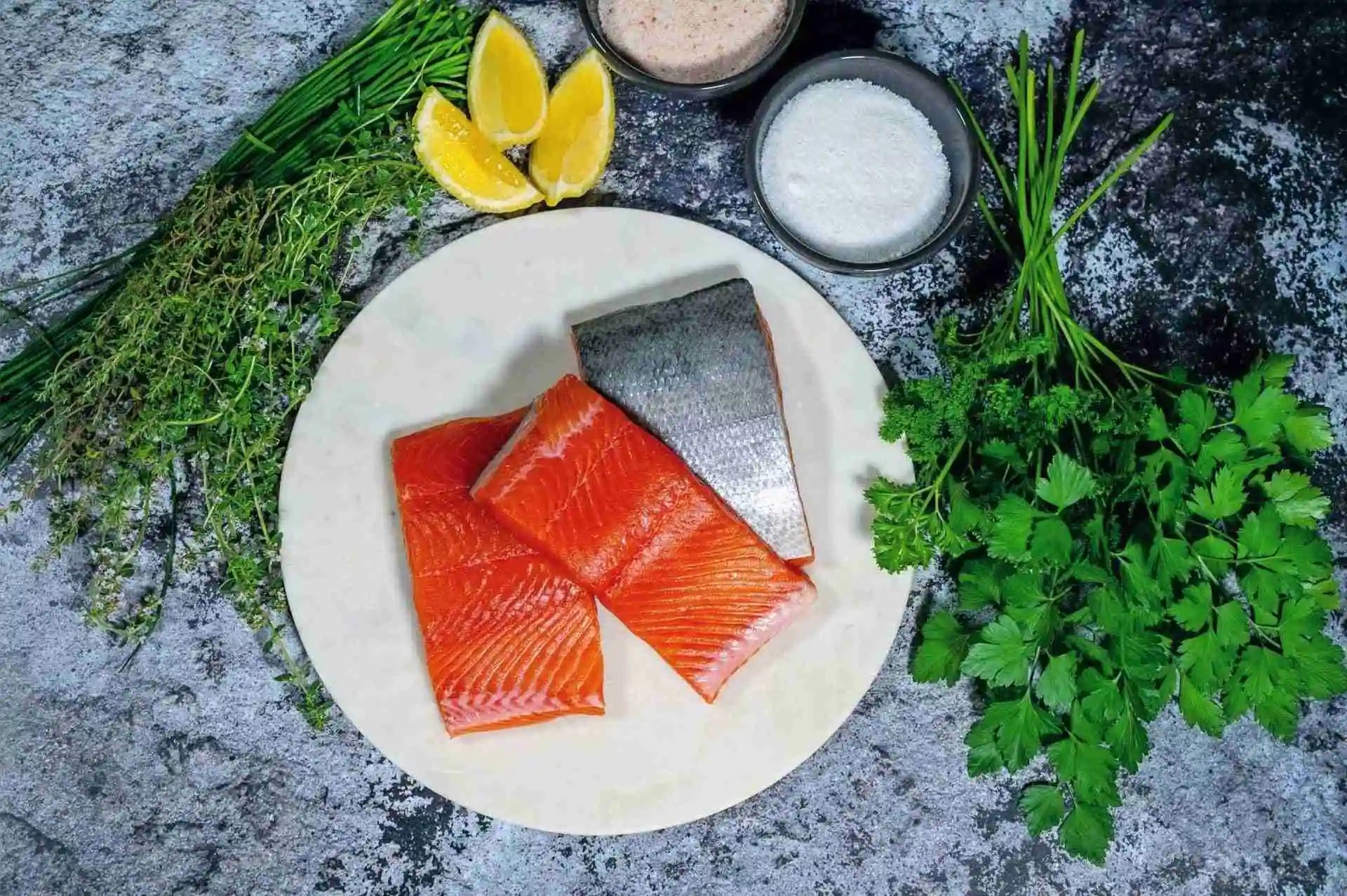
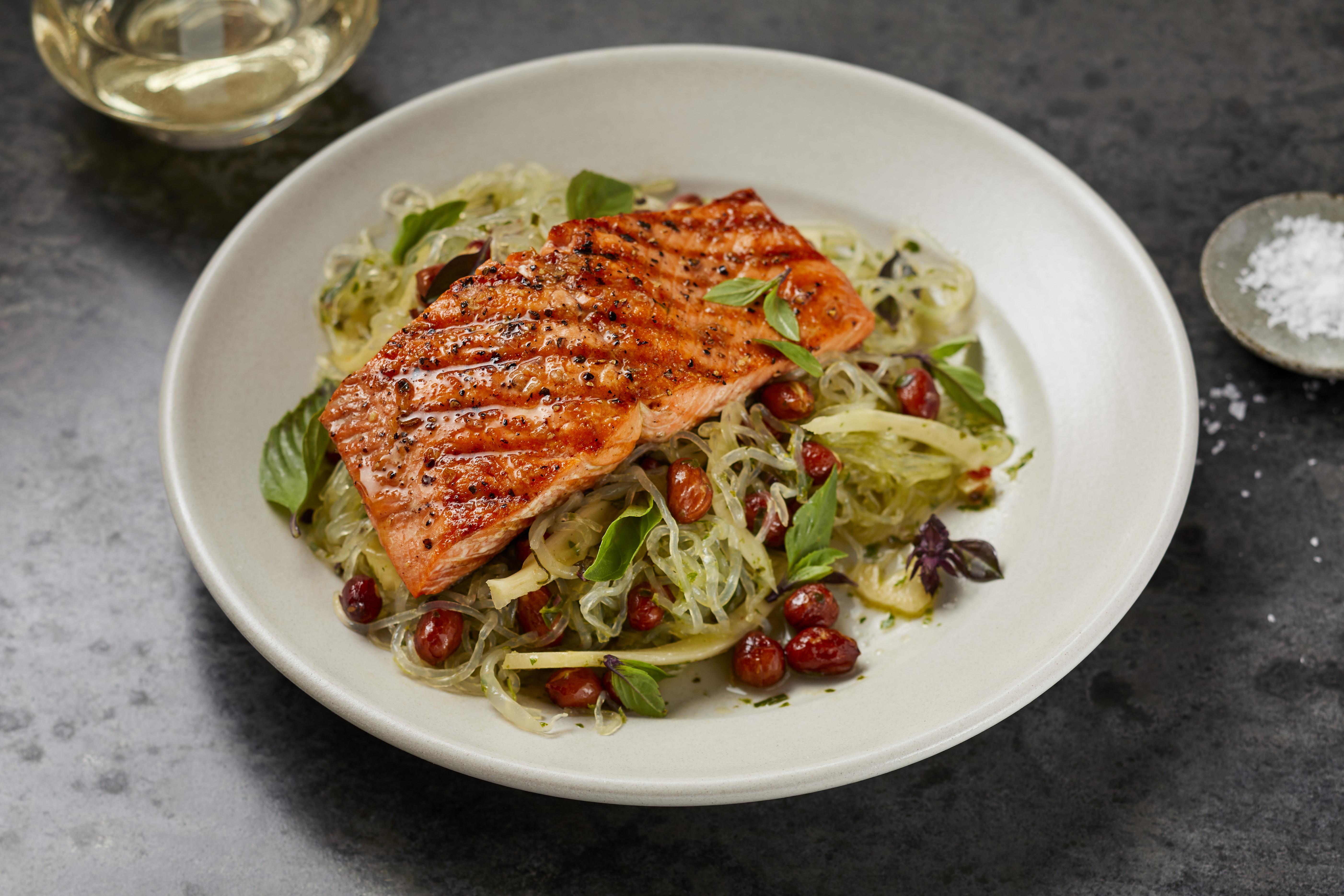

Copper River Sockeye Salmon Portions
The legend that made Copper River famous. Every spring, Copper River sockeye battle 300 miles of fierce glacial currents, building the rich fat, firm texture, and deep ruby-red color that made this the most famous salmon run in the world. This is the bold, clean-flavored Alaska salmon that chefs wait for all year, the one that turned "Copper River" into a mark of excellence.
Couldn't load pickup availability
Pickup available at Alaska Fresh Seafood - Butler
Usually ready in 2-4 days
We think you'll love these too...

Wild caught in Alaska

Flash-frozen at peak freshness
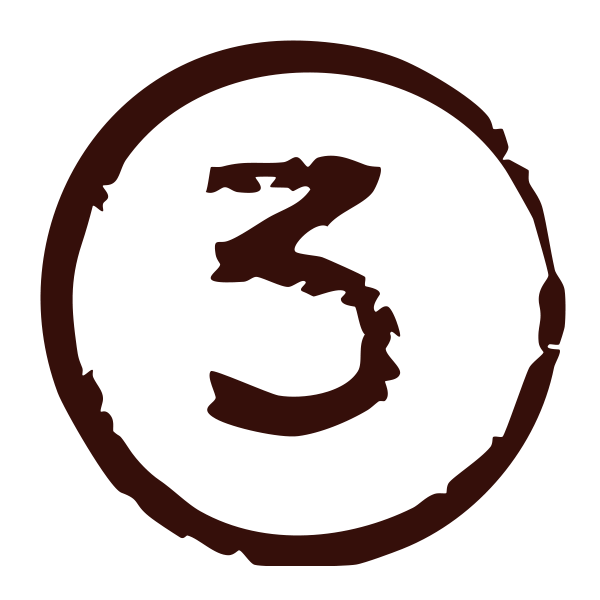
Most omega-3s in any salmon
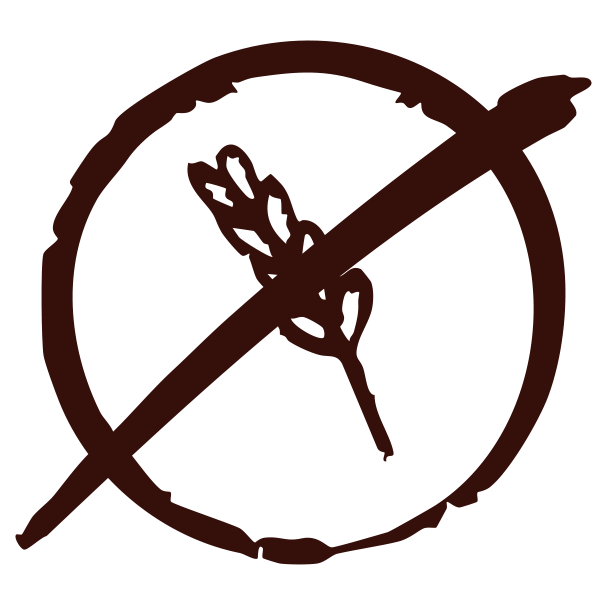
Gluten free, keto and paleo friendly
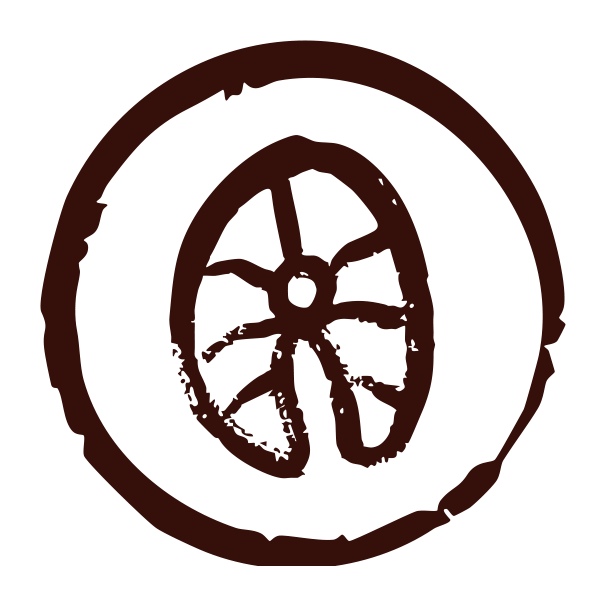
Frozen guarantee
PACKED WITH GOODNESS
Copper River Sockeye Salmon - frozen vacuum packed portions.
- Wild caught
- Premium quality
- Rich in omega-3s
- Gluten Free
- Keto and paleo friendly
- Convenient 4oz and 6oz portions
Looking for incredible flavor, Omega-3s, vibrant red color, firm texture, and rich nutrients? Look no further – wild Copper River sockeye salmon has it all.
Copper River salmon is renowned among all wild Alaskan sockeye salmon varieties. While living in the ocean, they develop strong muscles and store a lot of fat. This helps them prepare for the 300-mile journey up the cold and fast Copper River.
The high-fat content in this fish provides the rare and important Omega-3s. Other nutrients in wild caught salmon are selenium, phosphorus, potassium, magnesium, iron, Vitamins B and D, and many others.
Thanks to the diet of sea plants and krill, Copper River sockeye boasts a vibrant red color, earning the nickname "red salmon." Many well-known chefs, health experts, fitness enthusiasts, and food lovers enjoy this high-quality salmon. Now you can enjoy it too!
We catch, process, and flash freeze our fish in Alaska to maintain their high quality meat structure and nutrients. Vacuum sealing and flash freezing stops the formation of ice crystals and preserves all qualities of our frozen fish. Whether you enjoy your salmon today or in the future, our vacuum-sealed portions ensure a top-quality experience.
Our frozen salmon fillets can last up to two years if the vacuum seal remains intact. Our convenient 4oz and 6oz portions fit easily into any freezer, so feel free to stock up.
Cooking with wild Alaskan salmon from the Copper River is surprisingly easy. Whether you're a seasoned chef or a home cook, this incredibly fresh salmon is perfect for you.
OUR FISH SOURCE
Our Copper River salmon is caught exclusively by small boat Alaskan fishermen in the Copper River fishing district just outside of Cordova, Alaska. The fishing season “on the flats”, as this district is called, starts in mid-May and ends in mid-July.
The men and women in our fleet are dedicated to the best handling practices, such as bleeding every fish immediately after it comes out of the water, using slushed ice or refrigerated sea water to minimize the pressure on the meat and keeping their fishholds at 32 – 36 degrees Fahrenheit to maximize the shelf life of the product while they transport and deliver their catch to our processor.
SHIPPING INFORMATION
STANDARD SHIPPING:
Your order will ship via UPS the Monday, Tuesday or Wednesday after you place your order. Your fish will arrive Tuesday - Thursday depending on your location. The orders are shipped from our hub in Milwaukee with dry ice for transit. Don’t worry, ALL fish are from Alaska! We do quality control and reduce your shipping cost by shipping from Milwaukee.
EXPEDITED SHIPPING:
If you pick expedited shipping during checkout, your order will be shipped within one business day with overnight delivery. With the exception of our shelf stable products, we are not able to ship on Fridays.
PICK-UP:
You will receive an email when your order is ready with instructions on how to coordinate your pick-up date, time, and place.
FROZEN GUARANTEE
Frozen shipments are shipped with ample dry ice to sustain the shipment duration. Frozen products need to be put in the refrigerator for immediate consumption or in the freezer for future use shortly after delivery. The dry ice is sublimating during the shipping process so your shipment may arrive with no ice left in the box, but it is good and safe to consume as long as it remains frozen.
If your shipment arrives partially thawed on the edges, it is still good and safe to consume. If the frozen products arrive completely thawed out or damaged in any other way, please take pictures and/or videos with as many visual details as possible and contact us for a possible refund or reship.
The Wild Difference You Can See, Taste & Feel
Good For You Naturally
Recommended recipe
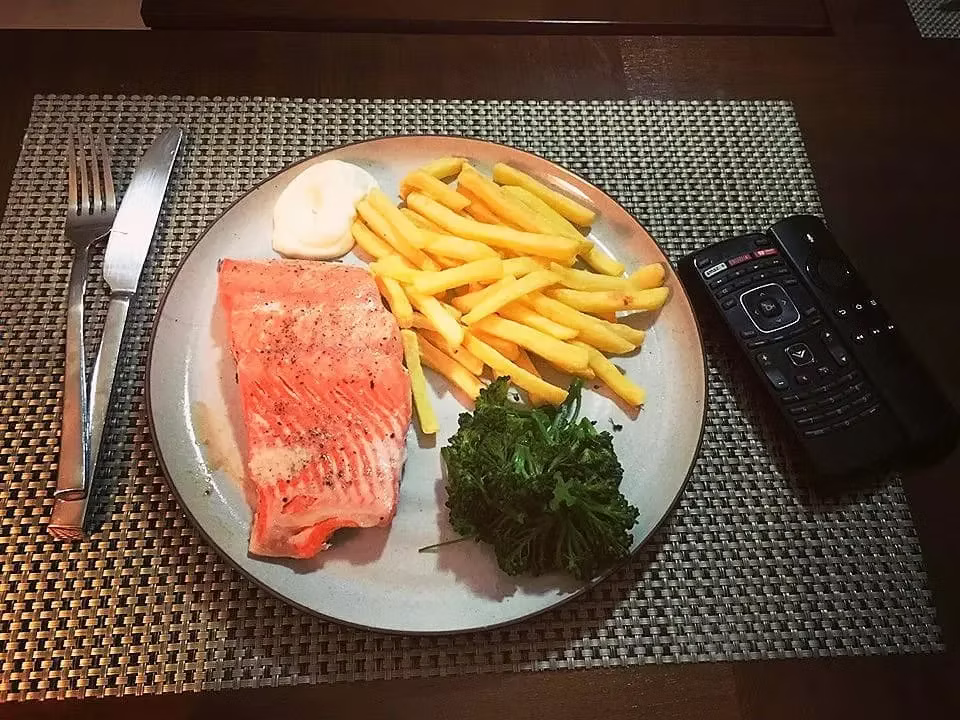
Easy Cook From Frozen Copper River Wild Alaskan Salmon
Preparation and Cooking Time: 30 mins or less.
Ingredients
For the fish
Frozen Copper River wild Alaskan sockeye
Olive oil
Salt
Pepper
For the sides
Fresh broccoli
Frozen French fries
For the sauce
Mayonnaise
Ground black pepper
Mustard (any kind you have on hand will work)
Pickles (e.g., Milwaukee's Baby Kosher Dills)
Directions
Salmon
1 Remove frozen Copper River wild Alaskan salmon from the packaging.
2 Lightly drizzle a frying pan with olive oil and place the Copper River wild Alaskan salmon on the pan, skin side down.
3 Turn the heat to medium-low, cover the pan, and let the fish cook skin side down for about 20 minutes or until it seems cooked all the way through.
4 Flip the Copper River wild Alaskan salmon for a couple of minutes.
Sides
French Fries
While the Copper River wild Alaskan salmon is cooking, prepare the frozen French fries in the oven following the instructions on the bag.
Broccoli
1 Cut fresh broccoli into approximately 1-inch pieces.
2 Season it with salt and pepper.
3 Steam the broccoli until it reaches a soft texture, being cautious not to overcook. Check every couple of minutes.
Tartar Sauce
1 Cut one small pickle into the smallest cubes possible.
2 Mix the pickle cubes with about a cup of mayonnaise.
3 Add a spoonful of mustard and ground black pepper to taste.
4 Achieve a semi-runny consistency by adding a bit of pickle juice. Adjust the thickness with more pickle juice or mayo, according to preference.
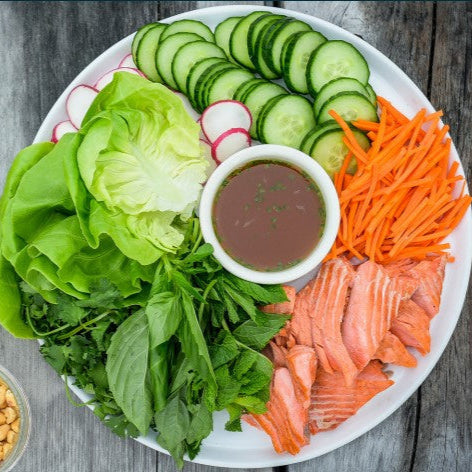
Copper River Sockeye Salmon Lettuce Wraps
Ingredients
1 lb Copper River Sockeye Salmon
1 cup julienned carrots
¼ cup unseasoned rice vinegar
1 tbsp honey
¼ tsp salt
salt & pepper
1 tsp oil
12 leaves of butter lettuce
1 cup sliced cucumber
1 cup sliced radish
1 cup pickled carrots
1/3 cup each of fresh herbs: basil, mint, cilantro
½ cup chopped peanuts
1 cup dipping sauce of choice: nuoc cham, peanut sauce, or sweet chili sauce
Directions
1 Combine vinegar, honey, and salt in a small saucepan.
2 Heat until dissolved, then add carrots.
3 Let cool and refrigerate for an hour, preferably overnight.
4 Season Copper River sockeye salmon with salt and pepper.
5 Heat oil in a pan over medium-high heat.
6 Add salmon flesh side down and cook for 3 minutes.
7 Flip and cook Copper River sockeye salmon for 2-4 minutes, or until flesh is opaque and separates easily with a fork.
8 Gently flake Copper River sockeye salmon, and arrange on a platter with the vegetables and herbs.
9 Offer the peanuts and dipping sauce on the side.
10 To assemble, place about one ounce of cooked Copper River sockeye salmon in a lettuce cup, then add vegetables and herbs, and top with peanuts and a drizzle of sauce.
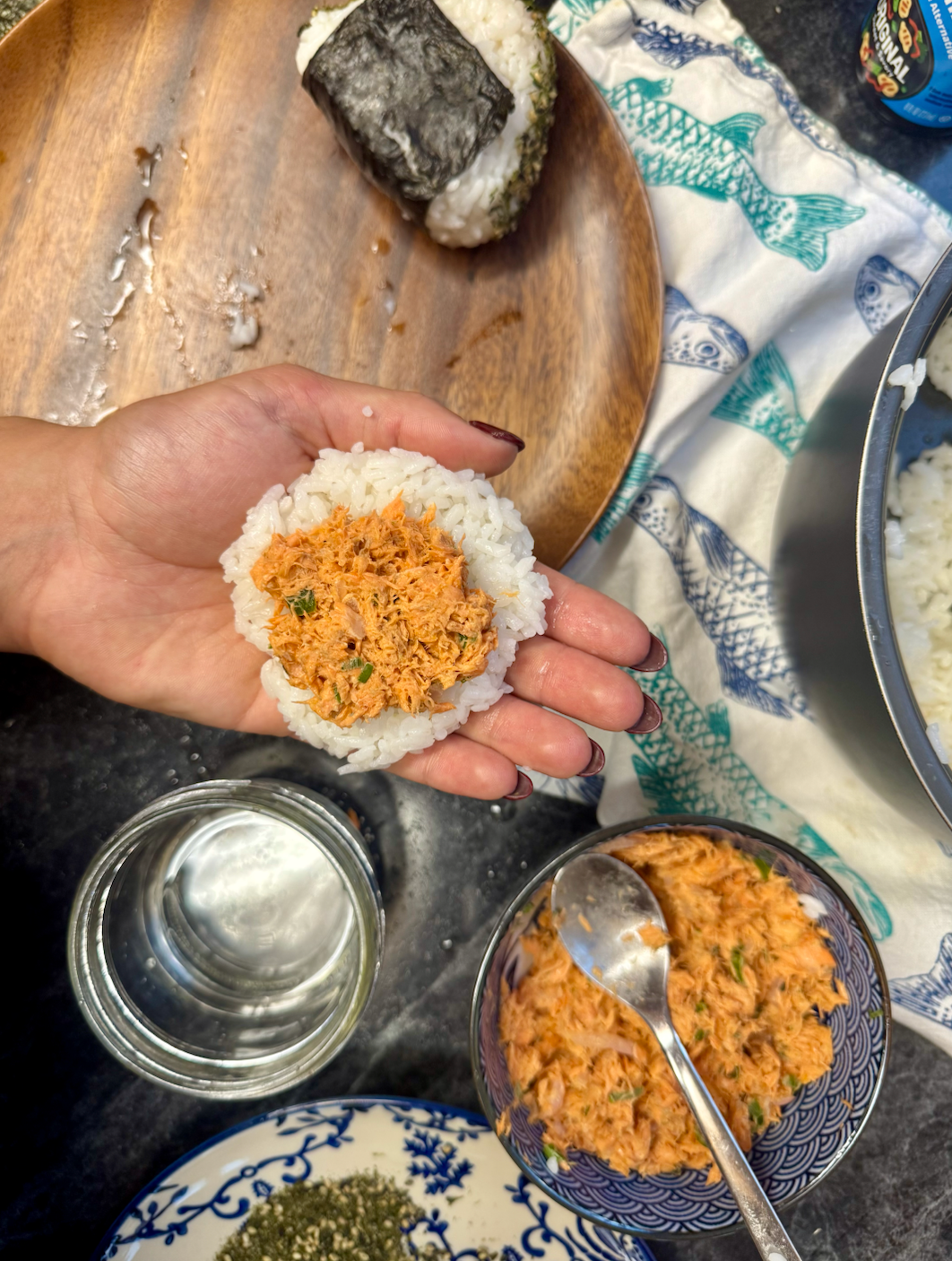
Salmon Onigiri (Rice Balls)
Makes roughly 5 large onigiri.
Ingredients
- 3 Cups cooked short grain rice
- Dash of salt and sugar
- 1 Cup cooked salmon, flaked
- 1 Tbs diced green onion
- 1 Tsp Coconut aminos
- 1 Tbs kewpie mayonnaise
- 2 Tbs pickled red onion or radish, diced
- Furikake seasoning
- 5 sheets nori seaweed
Instructions
- Cook the rice following package instructions. Add a dash of salt and sugar and stir well with a non-stick paddle or spatula while still warm.
- Create the filling by mixing the cooked salmon with the green onion, mayonnaise, coconut aminos, and pickled onion.
- Next, prepare your space by cutting the nori sheets in thirds with scissors. You may want to trim them further depending on the size of your final rice ball. Place a shallow bowl of water nearby for dipping your fingers and spread the furikake seasoning out onto a plate for rolling to coat the final rice ball.
- To assemble, wet your hand and place enough rice inside to cover your palm. Add one spoonful of the salmon filling into the middle. Using the rice paddle add another palm sized amount of rice on top making a "sandwich" in your hand. Before you shape the ball make sure to wet your other hand, this will prevent the rice from sticking to your fingers and making a mess! Slowly squeeze and shape the ball until the rice envelopes the filling. Next, you can shape a triangle with your fingers, or using a square pyrex you can push the ball into shape in the corner. It doesn't have to be perfect, as long as it holds together!
- Once you have shaped the onigiri, rewet your fingers and place a piece of nori seaweed along the base of the onigiri. This helps maintain the structure and adds a nice umami chewiness to the whole bite. Roll as much as you desire in the furikake mix to finish.
ASK YOUR FISHMONGER
What makes Copper River salmon special?
Copper River salmon have to swim 300 miles up the stream of an icy cold Copper River Watershed to get to their spawning grounds. They have to gather enough muscle and fat to survive this tremendous journey. The high fat content gives Copper River salmon its incredible taste, moist texture and a lot of Omega-3 acids, one of the most important nutrients in any fish.
This unique salmon is praised amongst the top chefs for its taste and texture qualities, while home cooks also enjoy the simplicity. Copper River salmon tastes so good that the only other ingredient you need is a little bit of salt.
High quality brings high demand, but whether you look for kings, sockeyes, or cohos, Copper River salmon is hard to get. Knowing its uniqueness and fragile balance in the ecosystem, everyone involved in the Copper River fishery works towards a sustainable future. Fishing season is short with areas and times regulated to guarantee the needed escapement for future populations to thrive year after year.
Fishermen are often considered lucky to be able to participate in the Copper River fishery and they are known to be a poster child of quality fish handling and temperature control.
What's the difference between Copper River sockeye, Copper River king and keta salmon?
Copper River king is known as the best salmon in the world because of its extremely high omega-3 content, buttery flavor and velvety texture. The fishing season for this special fish is short and extremely regulated so only a very limited amount is available each year.
Copper River sockeye is known for its intense salmon-forward flavor, high level of omega-3s and beautiful bright red color. It lives in the same ecosystem as the Copper River king salmon, and while it doesn’t get as “fat” as the king, it has more omega-3s than wild sockeyes from other fishing areas. It is also very high in an antioxidant astaxanthin, which is 6000 more powerful in neutralizing harmful free radicals than vitamin C.
Our keta salmon is harvested in the Prince William Sound area. It doesn’t offer the fat content of the king or bright color of the sockeye, but it’s still a very good source of omega-3s, nutrients and healthy protein. Its mild flavor makes it an ideal choice for marinating or cooking with flavorful sauces and spices. It’s also our most affordable wild salmon species.
When is Copper River salmon season? Is this from this year's catch?
Copper River king salmon has the shortest fishing season, usually from mid to late May until late June, early July. Copper River sockeyes can be caught from mid May until late July and cohos usually run from early August until late September.
Why is Copper River sockeye salmon more expensive than regular sockeye?
Copper River sockeye salmon is more expensive than regular sockeye because of where and how it’s harvested, and how it’s handled. Think of it as the “wagyu beef” of salmon. Copper River sockeye (same as Copper River coho and king) are specifically from the Copper River fishing district, in South Central Alaska, full of pristine, glacial-fed waters. The salmon swim free range for 3-7 years in the Pacific ocean to build up fat and muscle for their 300 mile journey against the strong and cold river current back to their spawning grounds in the Chugach mountains.
The fish are harvested by one person, on a small boat, each one picked from the net, by hand. There are no mass fishing boats allowed in the district. The fishery is a poster child for quality and sustainability, unlike many fisheries around the globe where fish stocks are drained.
The fishing fleet is less than 500 boats, all of which undergo specific training and protocols for how to properly handle each fish after catch with particular bleeding and slush-ice storage methods.
Fishing for Copper River salmon is an art form. The technique has not changed much over centuries, which is becoming more and more rare as working waterfronts collapse due to mismanagement - something you do not need to worry about when sourcing from the Copper River.
Is sockeye salmon very 'fishy' tasting?
Our Copper River sockeye is definitely not fishy tasting, which is why it is so coveted by salmon eaters. Sockeye should have a fresh, salmon-forward taste. The “fishy” taste comes from lack of freshness but because our fish is flash-frozen at peak freshness, it tastes like fresh out of the ocean. Once you have Copper River sockeye, it’s really hard to go back to any other salmon. If you have fishy tasting sockeye, it’s probably not very fresh or it was sitting in the deli case for a little too long.
How big are the portion sizes?
Each frozen portion is generally 6 oz. Depending on how hungry you are, you can get 1-2 servings per portion. Our whole sides of salmon are around 1.5 lbs. each.
Our minced salmon and halibut cheeks and chop are 1-pound packages. Our smoked salmon is 4 oz or 6.5 oz. Check each product for exact weight details. Depending on how hungry you are, you can get 1-2 servings per portion.
Why is the fish frozen? That's not how it looks in the grocery store case.
Flash freezing fish right after catch is the only way to preserve its quality. Fish in general have very short shelf life. They start to spoil right out of the water. Bringing fish from Alaska to the Lower 48 without freezing can negatively affect the appearance, structure and taste.
It's a seasonal fish so you need to stock up in the summer to enjoy it year-round. Beware the thawed piece of wild Alaskan fish for sale! As your butcher if it was previously frozen and how long it’s been thawed.
Flash frozen is actually the freshest way to go!
Who do I support when I buy your fish?
Small boat fishermen in south Central Alaska, our processors in Cordova and Anchorage and our family in Menomonee Falls, Wisconsin.
When will I get my order?
Your fish will be shipped the Monday or Tuesday after your order is placed. You will receive your fish 1-2 days after shipping. We ship out of our hub in Milwaukee. Don’t worry, all of your fish is from Alaska! Adra’s originally from WI.
We relocated back here and started our company. And shipping from MKE versus Alaska saves you $$ on shipping as the customer! If you’ve purchased a 'preorder' product then the delivery date is in the product description.
Meet your Fishmongers
With 17+ years living in Cordova, Alaska, owners Adra and Juro built relationships directly with local fishermen and ran seafood processing operations, giving us the inside perspective most seafood companies simply don't have.
We hand-pick each fish from trusted boats, then partner with elite processor Copper River Seafoods (where Juro worked for 13 years) to ensure every fillet is perfectly cut, flash-frozen within hours, and vacuum-sealed to lock in peak freshness for up to two years.
While there's a myth that "never frozen" is best, the truth is unless you live on the Alaska coast, our flash-frozen fillets will taste fresher than anything that's been shipped fresh for days. We guarantee that our proven boat-to-box process delivers the quality consistency you deserve, with the personal expertise you can trust.

